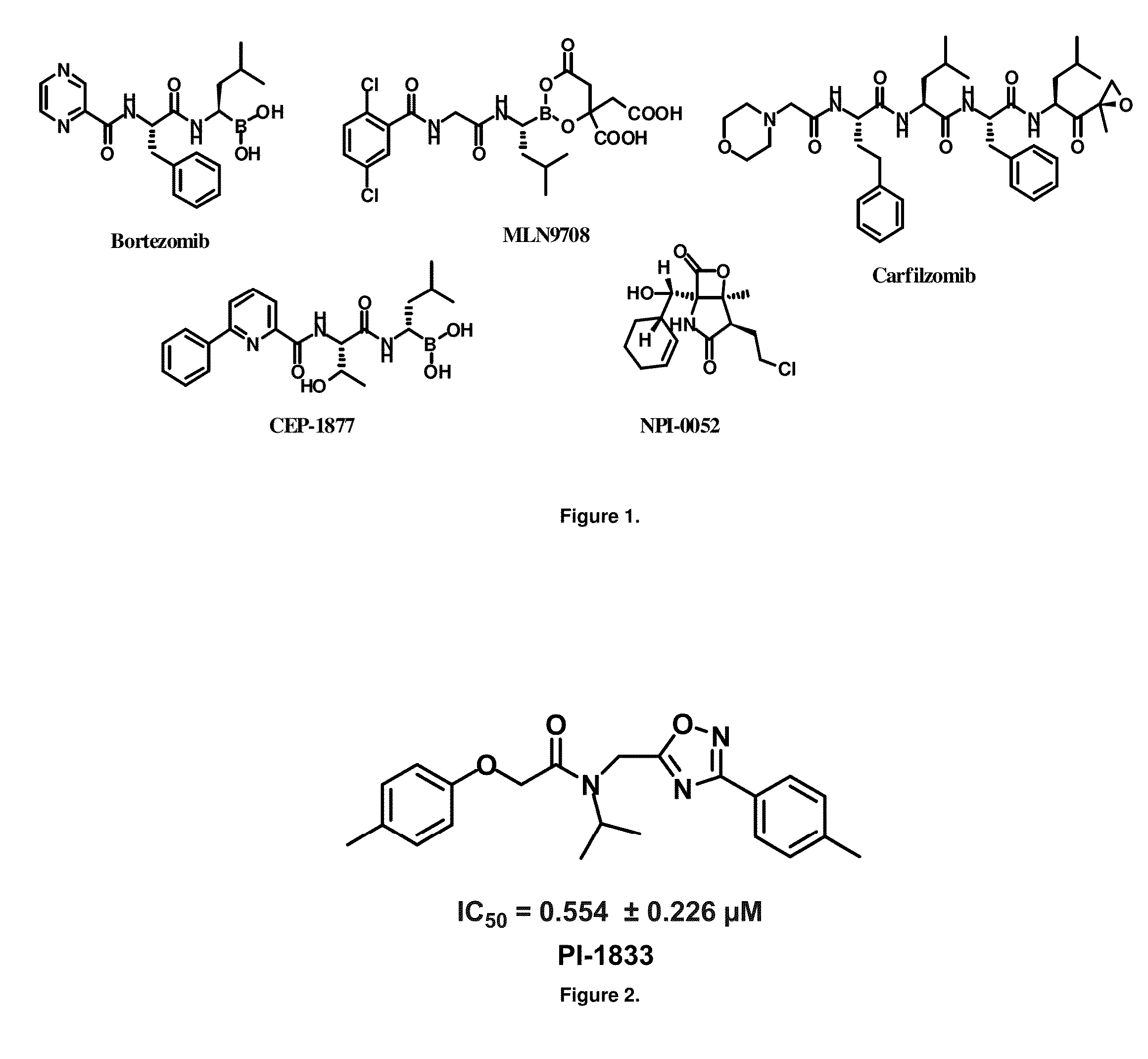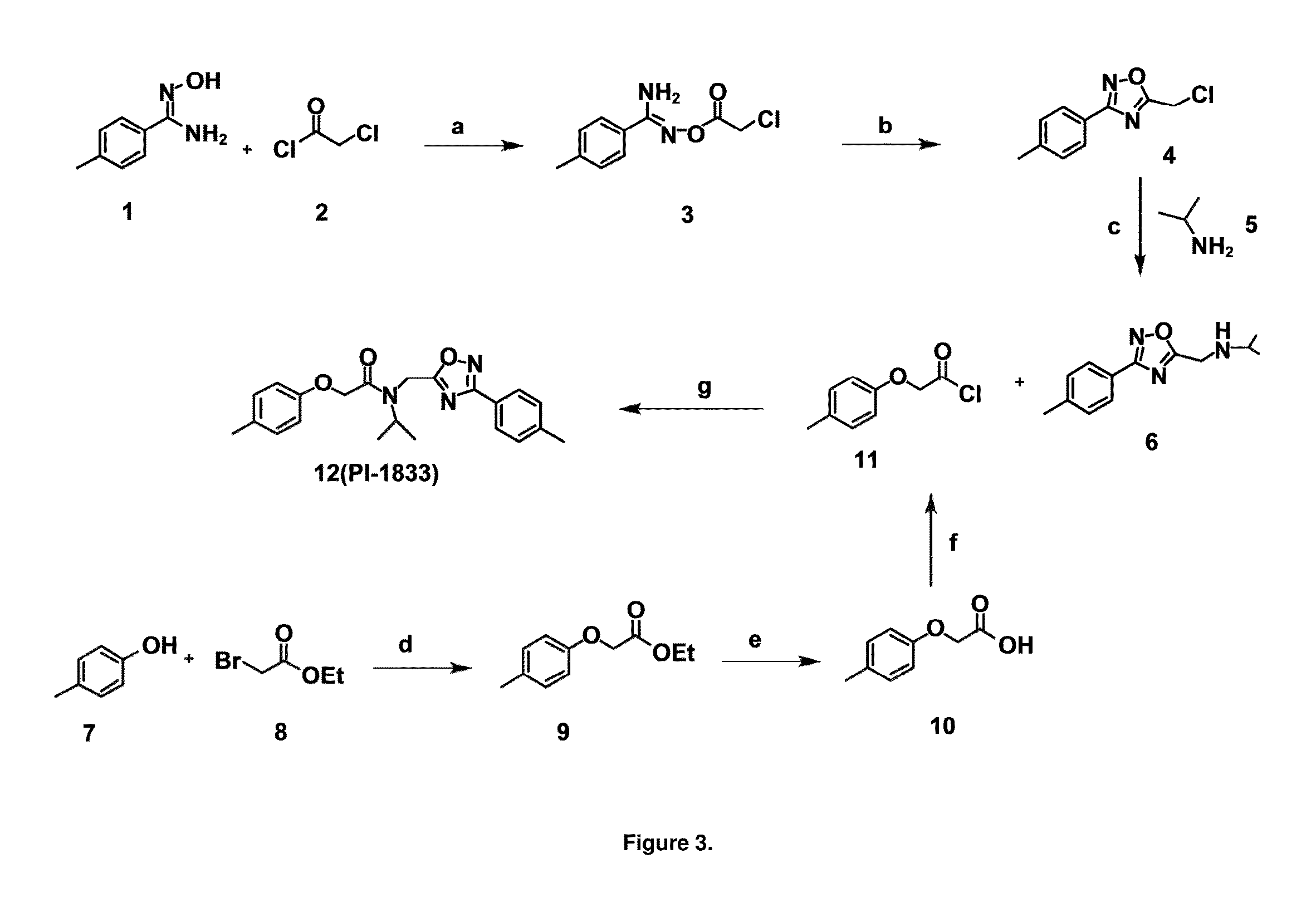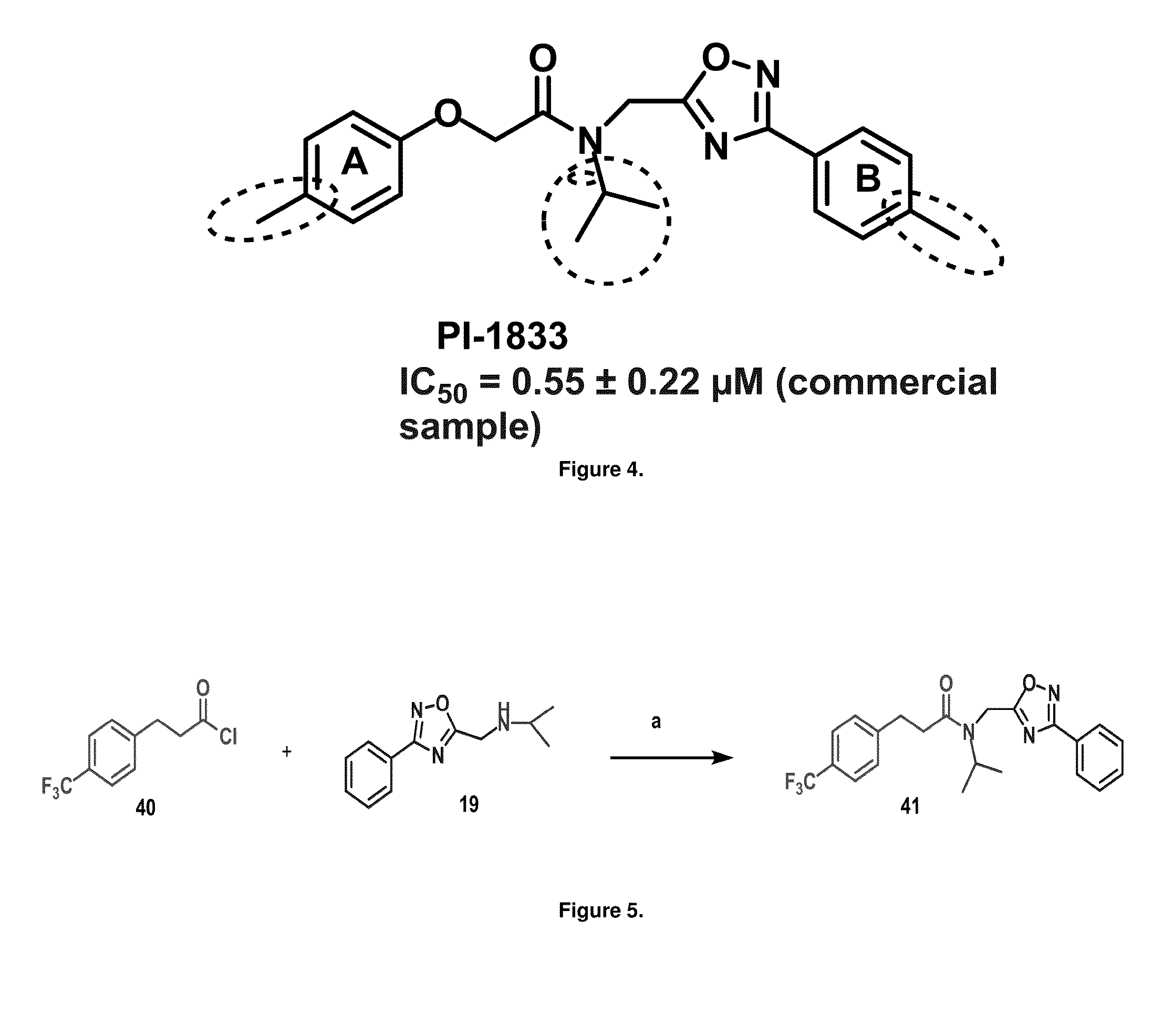Proteasome chymotrypsin-like inhibition using pi-1833 analogs
- Summary
- Abstract
- Description
- Claims
- Application Information
AI Technical Summary
Benefits of technology
Problems solved by technology
Method used
Image
Examples
example 1
[0050]High throughput screening of a 50,000 compound library against CT-L activity resulted in the discovery of PI-1833, a non-covalent and rapidly reversible proteasome inhibitor. Analysis of PI-1833, depicted in FIG. 2, exhibited an in-vitro IC50 value of 0.65±0.39 μM. Testing in whole cell MDA-MB-468 (breast cancer cells) showed the IC50 activity of PI-1833 was IC50=1.1 μM. The compound 1 has not previously been reported as a proteasome inhibitor. PI-1833 was synthesized according to the protocols shown in, FIG. 3 to confirm both the structure and in-vitro chymotrypsin-like (CT-L) activity of the compound. Starting from N-Hydroxy-4-methyl-benzamidine 1, the right hand portion of the PI-1833 (compound 4) was synthesized, which was then reacted with isopropyl amine 5 to form the compound 6. The left hand portion of the molecule 11 was synthesized from p-cresol 7 and bromoethylacetae 8. In the last step, the two building blocks were combined to obtain the PI-1833 (compound 12), in g...
example 2
[0052]The synthesis of the first generation analogs of PI-1833 were undertaken to understand the structural moieties important for activity and to evaluate SAR (structure activity relationship) data, which also confirms PI-1833 as an authentic proteasome inhibitor.
[0053]Initial synthetic modifications included substitution of the methyl groups on ring A and ring B with small hydrophobic groups such as Cl, CF3, F, isopropyl and bi-phenyl groups, seen in FIG. 4. The isopropyl amide moiety was synthetically modified to isobutyl, methyl, ethyl and naked amide (isopropyl group substituted with H). The synthesis of these compounds is summarized in FIG. 5.
[0054]The acetyl chloride building block library 5, seen in FIG. 6, was synthesized from readily available phenol derivatives via the intermediates ester 3 and acid 4 using reported protocols. The oxadiazole portion of the compound 1 was synthesized from readily available nitrile building blocks 6. The nitrile building blocks were reacted...
example 3
[0062]To further analyze Structure Activity Relationship (SAR) studies of PI-1833, synthetic modifications were carried out to the compound's backbone structure, as shown in the FIG. 18. To see the effect of isopropyl group on the CT-L activity, the isopropyl group was changed to methyl, ethyl, isobutyl and hydrogen by using the route depicted in FIG. 3.
[0063]The acetyl chloride building block library 5, seen in FIG. 6, was synthesized from readily available phenol derivatives via the intermediates ester 3 and acid 4 using reported protocols. The oxadiazole portion of the compound 1 was synthesized from readily available nitrile building blocks 6. The nitrile building blocks were reacted with hydroxylamine hydrochloride and sodium carbonate at 70° C. in water to yield the hydroxyamidines 7 (Gezginci, et al. Antimycobacterial Activity of Substituted Isosteres of Pyridine- and Pyrazinecarboxylic Acids. 2. J. Med. Chem. 2001, 44, 1560-1563), seen in FIG. 6, condition g. The 2-substitut...
PUM
| Property | Measurement | Unit |
|---|---|---|
| chiral purity | aaaaa | aaaaa |
| chiral purity | aaaaa | aaaaa |
| chiral purity | aaaaa | aaaaa |
Abstract
Description
Claims
Application Information
 Login to View More
Login to View More - R&D
- Intellectual Property
- Life Sciences
- Materials
- Tech Scout
- Unparalleled Data Quality
- Higher Quality Content
- 60% Fewer Hallucinations
Browse by: Latest US Patents, China's latest patents, Technical Efficacy Thesaurus, Application Domain, Technology Topic, Popular Technical Reports.
© 2025 PatSnap. All rights reserved.Legal|Privacy policy|Modern Slavery Act Transparency Statement|Sitemap|About US| Contact US: help@patsnap.com



